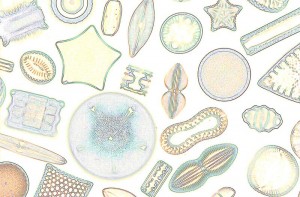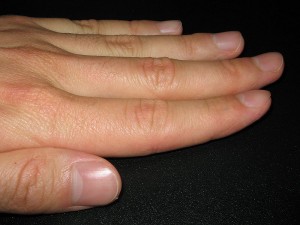MONDAY, 3 JANUARY 2011
It’s everywhere. It’s in the cereals you have for breakfast every morning, in the glass from which you drink your orange juice and in the ground you walk on. When you go on holiday it’s already there: in the sandy beaches and the rocks of the mountains. It’s also the main component of the microprocessor in your computer.The element is silicon, the mineral of the twenty-first century. Think of Silicon Valley, solar panels, the rubber-like pad you have on your mobile phone and breast implants. Without silicon we wouldn’t be nearly as technologically advanced as we are.
Silicon is a metalloid: half metal, half non-metal and after oxygen the second most abundant element in the Earth’s crust. Its atomic structure is similar to carbon, the element of life. In fact, silicon-based life forms on other planets were for years the object of speculation by scientists and science-fiction writers alike. But can you imagine silicon being essential for biological systems here on Earth?
All organisms contain some silicon, but different species use it for different purposes. For example, diatoms, microscopic creatures that live in the ocean, use silicon to build exquisitely patterned cell walls. Diatoms are hugely important for our planet, accounting for a quarter of all the biomass and therefore capturing huge amounts of carbon dioxide. Plants such as rice, sugar cane, wheat and barley also accumulate silicon. Interestingly, these plants can manage without silicon under optimal conditions, but when stressed, for example at low temperatures or if suffering a fungal infection, they can’t survive without it.
Silicon goes straight from plants to our plates in the form of cereals, grains, fruit, vegetables, water and beer. In fact, beer is the best source of the most easily absorbable form of silicon: orthosilicic acid. Overall, we ingest an average of 20-50mg of silicon per day, more than iron or zinc, elements with known and essential roles in the body.
Research on the role of silicon in animal and human biology started in the 1970s, when Edith Carlisle performed a study on two groups of chicks. Both groups were fed with the same low-silicon diet, but one group was supplemented with silicon. She observed that chicks on the low silicon diet were much smaller, had deformed bones and unhealthy feathers. Carlisle concluded that silicon must be important for the development and formation of connective tissues such as bones, cartilage and skin, as these were especially affected by the absence of silicon.
However, more than thirty years of research on silicon in biology still hasn’t determined whether silicon is essential to humans. We know that people who eat silicon-rich diets have higher bone mineral densities and therefore stronger bones. We also know that silicon is important for our skin, hair and nails, as well as helping to heal wounds and treat scars. Furthermore, there is some evidence that in regions of the world where water is especially rich in silicon, people are less likely to develop atherosclerosis. The connection between all of these processes is collagen, which gives flexibility and strength to our bones, joints, skin and blood vessels and acts as a glue, preventing our body from falling apart. The cell biology of collagen-silicon interaction is poorly understood.
Current research uses cells from human skin called fibroblasts. These are factories for various proteins in our connective tissues, including collagen. Using these cells, the difference in collagen production between those fed a silicon-rich and those fed a silicon-deficient diet can be examined. Paradoxically, the abundance of silicon in the environment makes these studies quite challenging because it is very difficult to remove silicon from the cell environment.
It is remarkable that although we understand the role silicon plays in our environment and in the machines we invent, the importance of silicon in our own bodies still remains largely a mystery.


